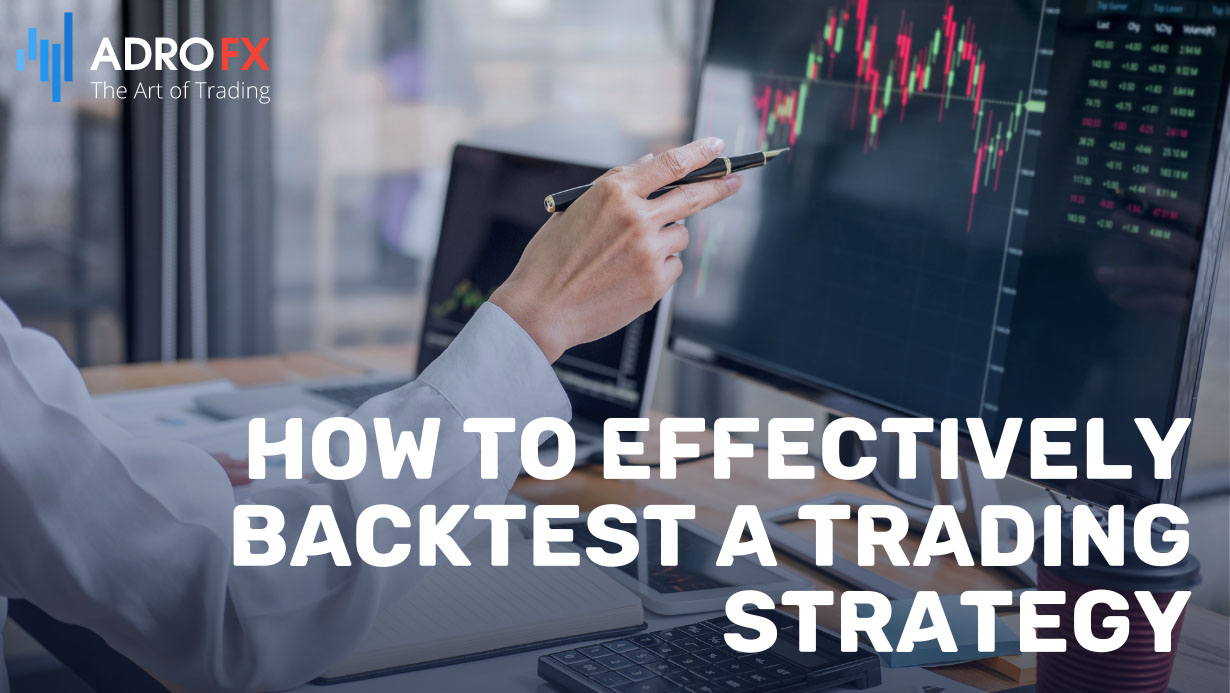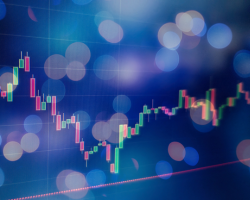Backtesting in Trading: Unlocking the Secrets of Historical Data Analysis

Backtesting in trading is a critical process that allows traders to assess the potential return of their trading strategies by leveraging historical data. It involves applying a trading strategy, whether manually devised or automated, to historical market conditions. The underlying assumption is that a strategy's past performance is indicative of its future success. While backtesting is a valuable tool, it does not guarantee future results. This article explores the concept of backtesting, its importance, types, and the key steps for effective testing.
What Is Backtesting in Trading?
Backtesting is a crucial process in trading where traders take a trading strategy and assess its potential success by utilizing historical data. This involves applying a strategy, whether it's a manual or automated one, to a real-world scenario. The underlying assumption is that a trading strategy that performed well in the past will continue to yield favorable results in the future.
It is highly advisable for traders to conduct backtesting before implementing a strategy in a live trading account. Typically, this testing occurs in a demo or practice account, which is essentially a trading account with real market data and virtual funds.
It's important to note that while backtesting can be a valuable tool, it doesn't guarantee that a strategy will achieve consistent success in the future. Some strategies that perform well in a backtesting environment may not deliver the same results in real-world trading situations.
In most cases, backtesting is closely associated with automated trading systems or robots. These bots are software programs that perform technical analysis and execute trades. They can also manage risks by setting Stop Loss and Take Profit levels.
Many trading platforms, such as MetaTrader and TradingView, offer built-in tools for backtesting automated trading strategies. These tools are highly advanced and can be adjusted to conduct tests in various ways.
Backtesting vs. Paper Trading
Backtesting and paper trading are terms often used interchangeably, but they have distinct differences. As described earlier, backtesting involves taking a trading strategy and testing it using historical data. In contrast, paper trading, often referred to as demo trading, entails using a demo account to execute trades. It is primarily used for developing and simulating trading strategies to evaluate how they would perform in a real trading environment.
The Importance of Backtesting
Backtesting stands as an essential undertaking for traders, bearing numerous compelling reasons:
- Simulating Future Performance
The process of backtesting empowers traders to peer into the future, albeit indirectly. By subjecting a trading strategy to historical data, they gain invaluable insights into its potential effectiveness. Essentially, it's like taking a test drive in the financial markets of yesteryears to see how their strategy would have fared. - Safeguarding Capital
Backtesting isn't about putting your capital where your mouth is. Instead, it unfolds within the protective confines of a demo account. Here, traders can freely experiment with various scenarios without ever exposing their hard-earned capital to potential losses. It's a risk-free laboratory where strategies can be honed and enhanced. - Fine-Tuning Strategies
The ability to tweak and refine trading strategies is a pivotal advantage of backtesting. Here, traders have the flexibility to make adjustments without bearing any real capital risk. For instance, they can experiment with different moving average periods to ascertain which one wields the most effectiveness in historical market conditions.
In essence, backtesting serves as a safeguarded arena for traders to peer into the future, all the while honing their strategies to perfection without the perils of capital exposure. It's a vital tool for traders striving to enhance their trading skills and make informed decisions.
Types of Backtesting
In day trading, there are three primary types of backtesting:
The first one is replay backtesting. It is a feature offered by most trading platforms. It enables traders to replicate a live market environment using past trading data.
The next one is coded backtesting. Algorithmic traders commonly employ coded backtesting. They run various simulations to assess the potential outcomes of a trading strategy systematically.
And the last one is manual. Manual backtesting is the most prevalent approach. Traders formulate a strategy and then manually simulate its historical performance. For example, they might focus on a specific chart pattern, such as a triangle, and analyze its historical success.

How to Effectively Backtest a Trading Strategy
Many traders seek guidance on how to conduct a comprehensive backtesting strategy in trading. Here are the key steps to follow when assessing the effectiveness of a trading strategy:
- Develop a Trading Strategy:
Start by creating a trading strategy tailored to your preferences. Some popular trading strategies include double moving averages, Bollinger Bands, trend-following, reversal, and algorithmic strategies. You can opt for either a manual or automated trading approach. - Use a Strategy Tester:
If you choose to implement an automated strategy, you'll need to utilize a strategy tester, a tool provided by your trading system. For instance, the chart below illustrates the results of a strategy tester within the MT4 trading software.
Key data points to input during the backtesting of a trading strategy include:
Period: Select the specific time frame for backtesting. Ensure it aligns with your trading strategy, and if you utilize an hourly chart for trading, stick to the same time frame for backtesting.
Delays: Account for execution latency or delays in the testing period.
Deposit: Use an amount of virtual capital in the demo account that mirrors the actual funds you intend to trade with. - Tweak the Strategy:
Fine-tune your trading strategy based on the backtesting results and conduct a second round of backtesting. For instance, if you initially employed a 25-day moving average, consider changing it to 20 and observe the outcomes.
This adjustment helps you assess the adaptability of your strategy under varying market conditions. It can also save time by eliminating the need to create a new strategy for every situation.
Important Rules for Backtesting Strategies
To ensure a reliable backtesting process, adhere to the following guidelines:
- Don't Rush: Dedicate adequate time to the backtesting process. It's advisable to allocate at least two weeks for thorough testing.
- Use the Same Assets: Always perform backtesting on the same assets you plan to trade. If you're trading the EUR/USD pair, your backtesting should focus on this specific pair.
- Match the Period: Align the backtesting period with your preferred trading time frame. If you use an hourly chart for trading, consistently apply this time frame for backtesting.
- Include Costs: Factor in pricing and all associated costs related to executing trades.
Pros and Cons of Backtesting
Backtesting comes with its set of advantages and drawbacks. On the positive side, it offers traders the opportunity for risk-free trading. It's like a virtual sandbox where they can simulate their strategies without wagering actual capital. Moreover, backtesting can be a swift and efficient process, especially when it comes to automated trading strategies. It expedites the testing phase, allowing traders to swiftly assess their approaches and their adaptability.
However, backtesting isn't without its limitations. One notable drawback is its lack of accuracy. Historical data, while insightful, is no crystal ball for forecasting future performance. Market dynamics are constantly in flux, and what worked yesterday might not work tomorrow. These changing market conditions make historical data less reliable as a sole indicator. Additionally, there are instances where insufficient data is available for comprehensive backtesting. In such cases, traders might find themselves working with an incomplete picture, which can limit the efficacy of their testing process. While backtesting remains a valuable tool, traders must remain mindful of its inherent pros and cons.
Conclusion
Backtesting plays a pivotal role in a trader's journey to success, offering a risk-free environment to evaluate trading strategies. By simulating past market conditions, traders can fine-tune their approaches, identify optimal settings, and make informed decisions. However, it's essential to remember that historical performance does not guarantee future results due to evolving market conditions. Therefore, disciplined traders should complement backtesting with ongoing analysis and adaptation to thrive in the dynamic world of trading.
About AdroFx
Established in 2018, AdroFx is known for its high technology and its ability to deliver high-quality brokerage services in more than 200 countries around the world. AdroFx makes every effort to keep its customers satisfied and to meet all the trading needs of any trader. With the five types of trading accounts, we have all it takes to fit any traders` needs and styles. The company provides access to 115+ trading instruments, including currencies, metals, stocks, and cryptocurrencies, which make it possible to make the most out of trading on the financial markets. Considering all the above, AdroFx is the perfect variant for anyone who doesn't settle for less than the best.










